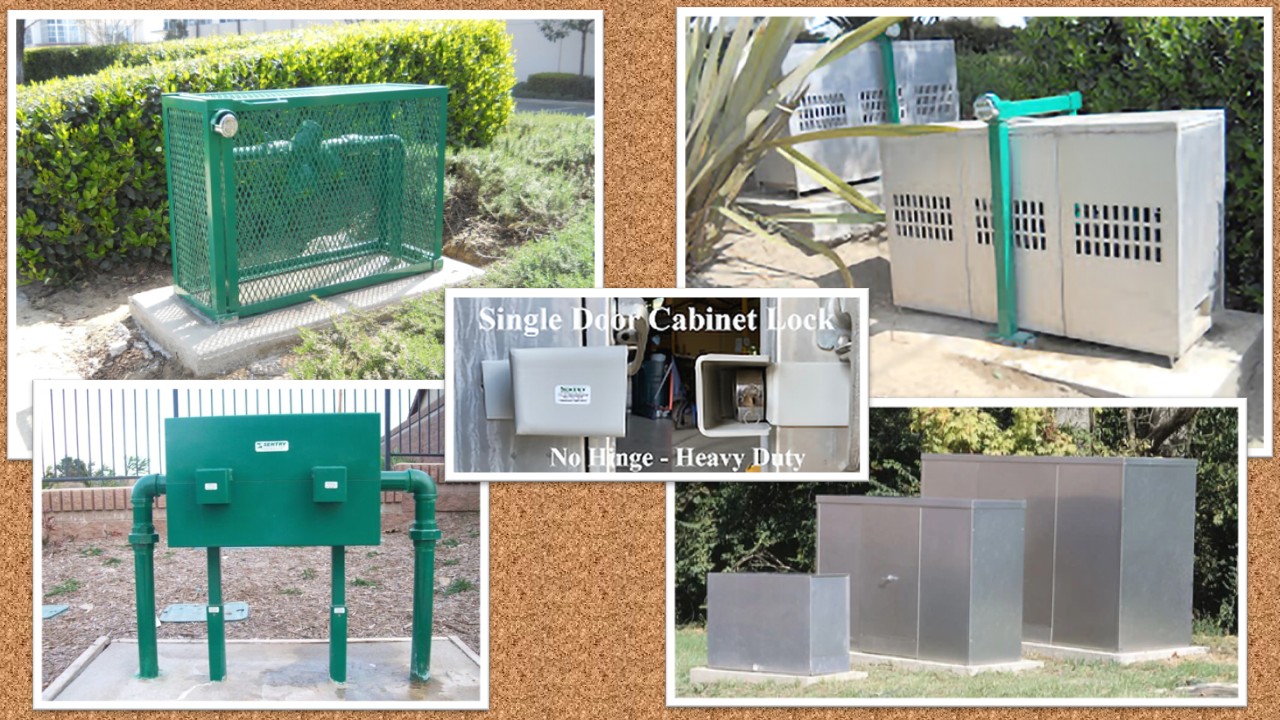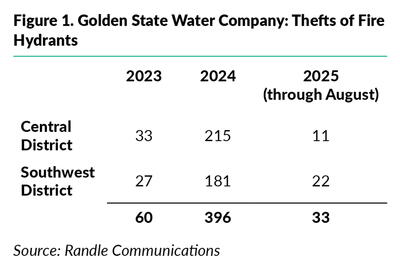
Sponsored content powered by Lock America
Denver Tightens Rules on Scrap Metal Theft
Recently, the Denver city council passed new regulations on scrap metal transactions in an effort to deter scrap metal theft. As reported by Denverite and Colorado Public Radio, this proposal requires scrap dealers to:
- Refuse all cash transactions.
- Keep detailed records of purchases from scrap sellers.
- Collect signed affidavits explaining how and where the scrap metal was obtained.
- Keep copies of photo IDs and license plate numbers.
Officials with the department of excise and licensing and the Denver police department would have the power to inspect transaction records and inventory at scrap merchants. Noncompliance could result in fines of up to $5,000 per violation per day, as well as license revocation.
Last year I reported on the increase in fire hydrant thefts, and some of the efforts to stem the tide. In the past year, some water commissions have taken the initiative to protect their assets.

Marko Mlikotin of Randle Communications notes the success of its client, Golden State Water Company of San Dimas, California, installing hydrant shields with locks. “After experiencing 396 fire hydrant thefts in 2024, resulting in a loss of $2 million, thefts have decreased significantly in 2025. This is partly due to the installation of security devices such as collars and tracking devices on fire hydrants, increased policing, and a public education campaign that discourages scrap yards from accepting stolen property and encourages customers to report thefts in progress.”
Shields and locks, increased law enforcement and community awareness, and close monitoring of scrap metal dealers all appear to have played a part in reducing theft.
Regulations such as Denver’s can deter threats to a city’s infrastructure, but a hardened target remains an organization’s first line of defense against theft. Denver is not alone. From Columbine and Littleton in Colorado to Southern California to Florida, scrap metal theft can cost municipalities thousands of dollars, even when there is only a small return for the criminal.
This article will focus on measures to deter theft of brass valves and water infrastructure elements. I’ll highlight some basic protective steps for copper in my summary. Enhanced regulations, heightened public awareness, and restrictions on cash sales can deter crooks, but the major tactic to protect backflow valves and water infrastructure is hardening the target with cages, enclosures, and locks.
Options for Hardening the Target
Communities and water commissions have a variety of upgrade paths to protect their assets. Companies such as D&M Manufacturing of Lake Elsinore, California, manufacture a variety of protective devices, from open cages to sealed boxes and custom shackles.
A cage secured with a high-security “hockey puck” lock provides a straightforward upgrade. D&M uses high-security locks from Lock America, Inc. of Corona, California, for all its products. These locks feature tamper-resistant keyways and key control with key registration to each customer. D&M also offers customer security boxes with shielded locks and a retrofit shackle option, a cost-effective upgrade that is also based on Lock America’s lock system.
Safe-T-Cover, located across the country from D&M in Nashville, Tennessee, produces a wide range of enclosures, including some especially suited for harsh environments in the northern U.S. As an additional option to their enclosures, Safe-T-Cover offers a patented MUNILOK system, which addresses the frequent issue of customers not locking their enclosures. MUNILOK automatically secures the enclosure at installation and integrates with a city’s existing utility vault key system, giving authorized personnel quick access without compromising security.
A system for smaller applications features a flushmounted locking rod and tamper-resistant puck-style lock that eliminates exposed hasps, reducing vulnerability to bolt cutters.
Safe-T-Cover has recently introduced a firerated enclosure built with NFPA 285compliant panels. Ideal for urban areas and public spaces, this enclosure resists flame spread and discourages misuse while offering the durability and security SafeTCover is known for.
Low-Cost Steps for Additional Protection
In addition to securing hardware on the spot, a number of municipalities, such as Glendale, Arizona, make additional suggestions:
- Paint, coat, or label valves and pipes to decrease resale value.
- Sample, label, or code to brand contraband.
- Post warnings and use surveillance when possible.
Copper Wire Remains Vulnerable
Unlike backflow valves and hydrants, which are cumbersome objects that can be shielded and locked, copper wire is everywhere. Cities can only secure a fraction of the target.
It’s possible to increase the security for traffic and electrical boxes, but the more practical tactic to prevent copper theft is to attack the dealer, as the recent multi-department investigation in San Jose, California, demonstrates.
Detectives with the police department’s vice unit targeted several recycling centers in the city following an increase in copper wire thefts. Undercover officers conducted a successful sting operation with spools of copper wire, electronic components, and metal items to sell as “stolen” property, successfully busting some shady scrap metal dealers with the help of the department’s financial crimes unit and the city’s department of transportation.
“If you do business in San Jose, you have to follow the law,” said Police Chief Paul Joseph in a prepared statement. “We will not tolerate crime, whether you are the one stealing the copper wire or purchasing it with the intention of making a dime off of victims.”
At a roundtable of business and municipal leaders in June, California Attorney General Rob Bonta issued a new law enforcement bulletin that summarizes the California statutes related to copper wire theft and laws governing junk dealers’ and recyclers’ obligations to collect and report information on copper transactions.
The solution here appears to be enhanced enforcement at the dealer market especially by prohibiting cash sales, requiring identification for transactions, and increased public awareness. There are copper disguises (spray painting to mimic plastic, for example) to protect the target, but until the price level drops below the risk level, copper will attract low-level crooks and shady scrap metal dealers.
Fire hydrants and back flow valves appear to lend themselves to hardware protection, but increased awareness and proactive tactics may make a dent in the copper theft market too.
For information about enclosures and cages, contact:
D&M Manufacturing
backflowtheft.com
info@backflowtheft.com
866-308-9911, 951-674-1908
Safe-T-Cover
safe-t-cover.com
customerservice@safe-t-cover.com
800-245-6333
For information about security locks, contact:
Lock America, Inc.
laigroup.com
sales@laigroup.com
800-422-2866

RICH MORAHAN writes frequently about security and marketing for a number of industries, including ATMs, information management, petroleum and propane distribution, and vending. You can contact him at 617-240-0372, rmwriteg@gmail.com, or rmorahan.com.
New, Reduced Membership Dues
A new, reduced dues rate is available for CAOs/ACAOs, along with additional discounts for those in smaller communities, has been implemented. Learn more and be sure to join or renew today!
